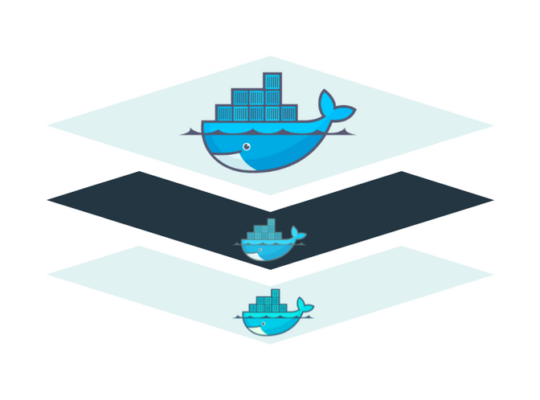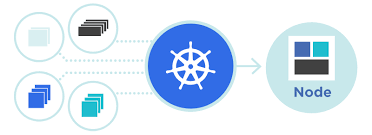Few helpful of AWS Notes
AWS – Notes

*** STANDARD SERVICE ***
- EC2 = Elastic Compute Cloud (Amazon EC2) provides scalable computing capacity in the Amazon Web Services (AWS) cloud.
- EFS = Elastic File Systems
- EBS = Elastic BeanStalk = you can quickly deploy and manage applications in the AWS Cloud without having to learn about the infrastructure that runs those applications. Elastic Beanstalk reduces management complexity without restricting choice or control. (CREATE APP- UPLOAD BY CODE OR GIT).
- ELB = Elastic load balance
- AMI = Amazon Machine Image (AMI) provides the information required to launch an instance.
- IAM = Identity and Access Management is a web service that helps you securely control access to AWS resources.
- S3 = Simple Storage Service is an object storage service that offers industry-leading scalability, data availability, security, and performance.
- VPC = VIRTUAL PRIVATE CLOUD (ACL, Subnets, VPN, Gateways etc.)
- API Gateway = Amazon API Gateway is a fully managed service that makes it easy for developers to create, publish, maintain, monitor, and secure APIs at any scale
- Lambda = Is a compute service that lets you run code without provisioning or managing servers. AWS Lambda executes your code only when needed and scales automatically, from a few requests per day to thousands per second. You pay only for the compute time you consume.
- Redshift = is a fast, scalable data warehouse that makes it simple and cost-effective to analyze all your data across your data warehouse and data lake.
*** DATABASES ***
- RDS = Relational Database Service makes it easy to set up, operate, and scale a relational database in the cloud. It provides cost-efficient and resizable capacity while automating time-consuming administration tasks such as hardware provisioning, database setup, patching and backups.
- DYNAMO-DB = Is a fully managed NoSQL database service that provides fast and predictable performance with seamless scalability.
*** CLOUDING ***
- Cloudformation = is a service that helps you model and set up your Amazon Web Services resources so that you can spend less time managing those resources and more time focusing on your applications that run in AWS. You create a template that describes all the AWS resources that you want (like Amazon EC2 instances or Amazon RDS DB instances), and AWS CloudFormation takes care of provisioning and configuring those resources for you.
- Cloudfront = CDN (Content delivery network)
- Cloudtrail = You can log, continuously monitor, and retain account activity related to actions across your AWS infrastructure
- Cloudwatch = Is a monitoring and management service built for developers, system operators, site reliability engineers (SRE), and IT managers.
*** CONTAINER ***
- ECS = Elastic Container Service (Amazon ECS) is a highly scalable,
- EKS = Elastic Container Service for Kubernetes (Amazon EKS) makes it easy to deploy, manage, and scale containerized applications using Kubernetes on AWS.
- FARGATE = Is a compute engine for Amazon ECS that allows you to run containers without having to manage servers or clusters.
*** SERVICES ***
- Directory Service = For Microsoft Active Directory, also known as AWS Managed Microsoft AD.
- Kenesis = Amazon Kinesis makes it easy to collect, process, and analyze real-time, streaming data so you can get timely insights and react quickly to new information.
- Systems Manager = Systems Manager gives you visibility and control of your infrastructure on AWS. Systems Manager provides a unified user interface so you can view operational data from multiple AWS services and allows you to automate operational tasks across your AWS resources.
*** NETWORKING ***
- WAF = is a web application firewall that helps protect your web applications from common web exploits that could affect application availability, compromise security, or consume excessive resources.
- Route53 = is a highly available and scalable cloud Domain Name System (DNS) web service.
*** MESSAGING ***
- SNS = Simple Notification Service (SNS) is a highly available, durable, secure, fully managed pub/sub messaging service that enables you to decouple microservices, distributed systems, and serverless applications.
- SQS = Simple Queue Service is a fully managed message queuing service that enables you to decouple and scale microservices, distributed systems, and serverless applications.
*** EFS = Elastic File Systems ***
AWS STORAGE PLATFORM
Files – Files storage.
Blocks – EBS (databases) + EC2 Instance storage
Objects – Piece of data, doc images = S3 + Amazon Glacier
The 3 ways to manage the EFS
AWS Management Console
AWS Command Line Interface CLI
AWS Software Development Kit SDK
Security
Control network traffic By VPC security groups and network ACLs
Control file and directory acceess POSIX permission
Control administrative access (API ACCESS) by IAM (Identity Access Management)
*** Logs Metrics ***
- Logstash is a tool for managing events and logs. When used generically, the term encompasses a larger system of log collection, processing, storage, and searching activities.
- Elasticsearch is a search engine]. It provides a distributed, multitenant-capable full-text search engine with an HTTP web interface and schema-free JSON documents
- Kibana is an open-source data visualization plugin for Elasticsearch. It provides visualization capabilities on top of the content indexed on an Elasticsearch cluster.
- Graphite is an enterprise-ready monitoring tool that runs equally well on cheap hardware or Cloud infrastructure
- IT operations monitor (data collector)
- HDFS is used to scale a single cluster to hundreds (and even thousands) of nodes. It is a distributed file system that handles large data sets running on commodity hardware.
*** High Availability ***
- Load balancing differs from channel bonding in that load balancing divides the traffic between network interfaces on a network socket (OSI model).
- Redundancy is the duplication of critical components or functions of a system with the intention of increasing reliability of the system usually in the form of a backup or fail-safe, or to improve actual system performance.


